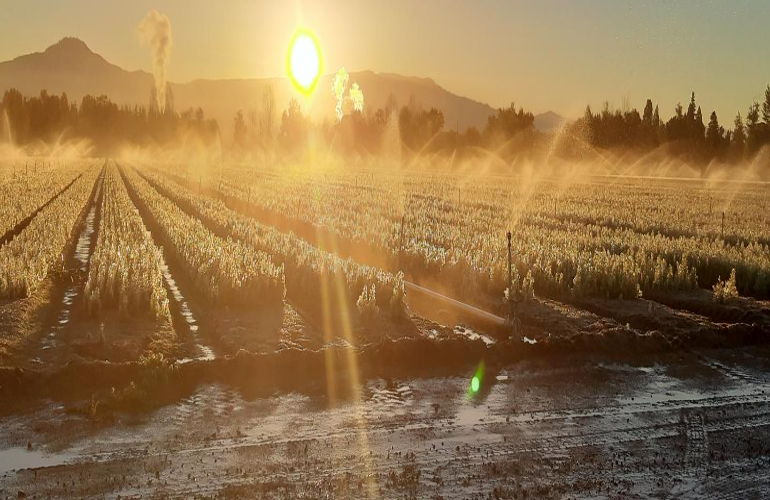
Happy Arbor Day! Here’s a great tree story: At the J. Herbert Stone Nursery in Central Point, OR, one of eight USDA Forest Service nurseries, employees took on a massive task to transplant nearly three million seedling plugs in an effort to further tree reforestation and post-fire recovery. The number of seedlings planted were roughly double the average annual volume the nursery transplants every Fall. (The typical project is 1 million to 1.5 million.)
This signifiant accomplishment, which took place in just 11 days last Fall, is part of a recently announced 10-year strategy to confront the wildfire crisis and improve forest resilience. Overgrown forests, a warming climate, and a growing number of homes in the wildland-urban interface—following more than a century of rigorous fire suppression—have all contributed to what is now a full-blown wildfire and forest health crisis.
Seedling Story
Forest Service nurseries provide locally adapted plants and seeds for reforestation projects. The seeds are replanted in the areas they were collected, assuring a source of desirable species and stock types for restoring native ecosystems.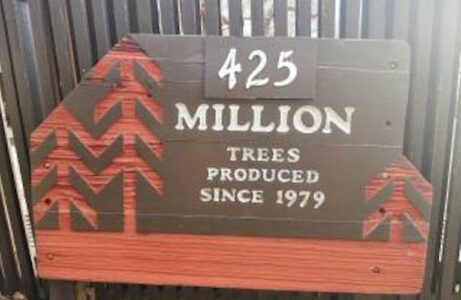
Seedlings are requested based on landscape needs, such as fire-related disturbances, timber harvest, and other specific requirements. Having the seeds be naturally, genetically acclimated to areas where they will be finally planted can help the seedlings succeed once they are planted on the landscape.
“Natural resource specialists working on the ground as part of fire recovery efforts were able to determine where and what they would be planting quickly. They submitted orders in the winter of 2020, which allowed the nursery to respond early to their requests,” said J. Herbert Stone Nursery Manager Jason McNeal. The Nursery has produced more than 425 million trees since 1979 (see signs at left). He adds, “Our dedicated and focused staff work long hours to fill the orders in short time frames and provide the attentive care needed for the seedlings to eventually grow into mature, healthy trees.”
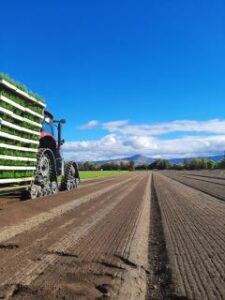 It took 14 semi-truck loads, each carrying 240,000 seedlings, to transport the nearly three million seedlings to the nursery. Once delivered and ready to go into the ground at J. Herbert Stone Nursery, the seedlings were removed, or “popped,” from the growing trays by a hydraulic-assisted machine, making it easier to grab and remove the plants without damaging them. The blocks of plants were then shuttled out to the production fields to be transplanted.
It took 14 semi-truck loads, each carrying 240,000 seedlings, to transport the nearly three million seedlings to the nursery. Once delivered and ready to go into the ground at J. Herbert Stone Nursery, the seedlings were removed, or “popped,” from the growing trays by a hydraulic-assisted machine, making it easier to grab and remove the plants without damaging them. The blocks of plants were then shuttled out to the production fields to be transplanted.
The best-case scenario is to plant 172,000 seedlings in an 8-hour day. Once transplanted, the seedlings grow roots quickly in the rich soils. Because they have just come out of a greenhouse, they are still actively growing. It is essential to protect them from frost until they can withstand that sort of temperature drop on their own. The nursery continues to protect the seedlings by using overhead irrigation during freeze events throughout the fall season.
 What happens next?
What happens next?
The seedlings will grow for a predetermined amount of time to meet the specific planting needs of the requesting forest. A minimum seedling height and diameter are agreed upon at the outset. The seedlings are “lifted” from production when they’re about a year and a half old. Then the seedlings will be processed and graded, assuring that only high-quality seedlings meeting the minimum size specifications are packed into boxes. Then it’s off to the forest, and when weather conditions are favorable, they can be planted in their forever homes.
To read more Tree Services® articles, click here.











![[VIDEO] Dickies®: Discover Workwear That’s Anything But Uniform](https://turfmagazine.com/wp-content/uploads/2023/06/1647663814-4b1a2a7742790a9b1e97a3b963477850192e1d6a9dfba9b07214a77bae25d6e3-d-218x150.jpg)




























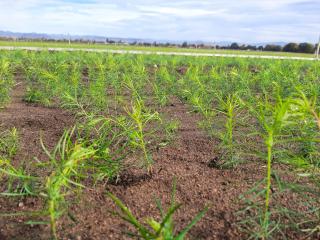 What happens next?
What happens next?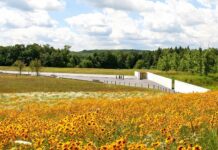
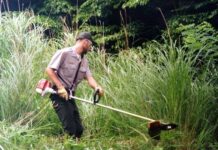
![[VIDEO] Dickies®: Discover Workwear That’s Anything But Uniform](https://turfmagazine.com/wp-content/uploads/2023/06/1647663814-4b1a2a7742790a9b1e97a3b963477850192e1d6a9dfba9b07214a77bae25d6e3-d-324x160.jpg)